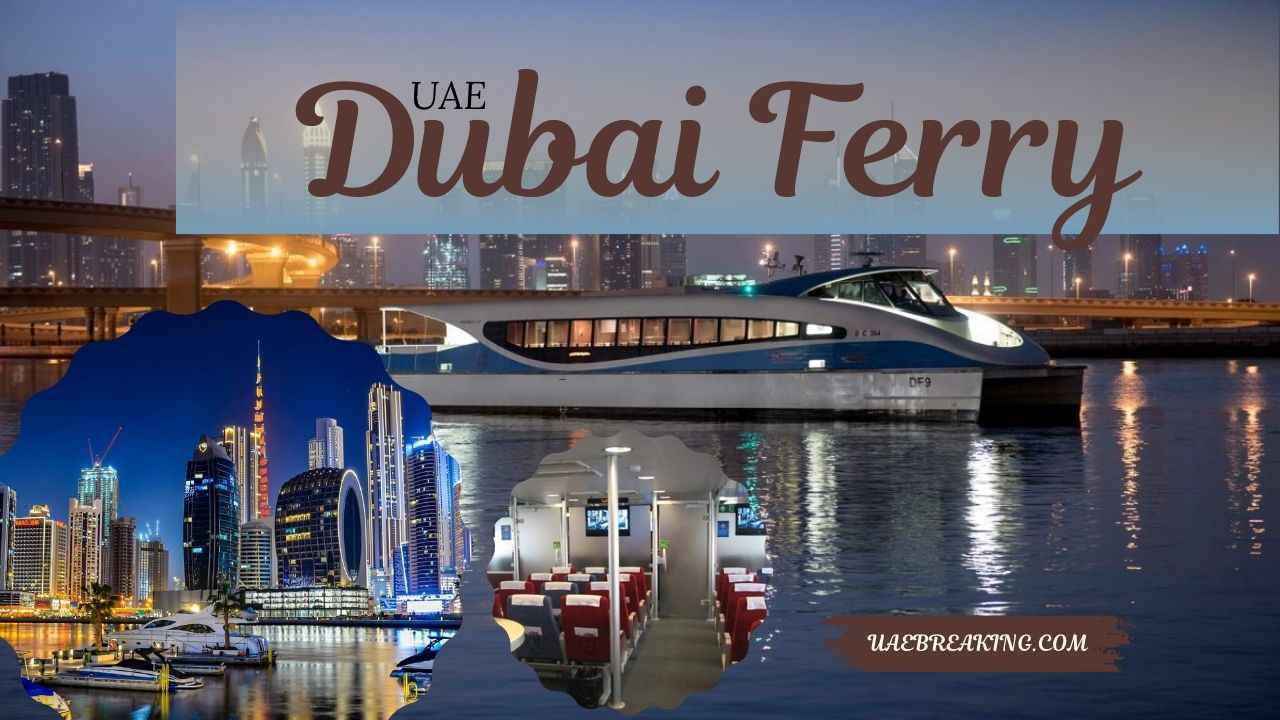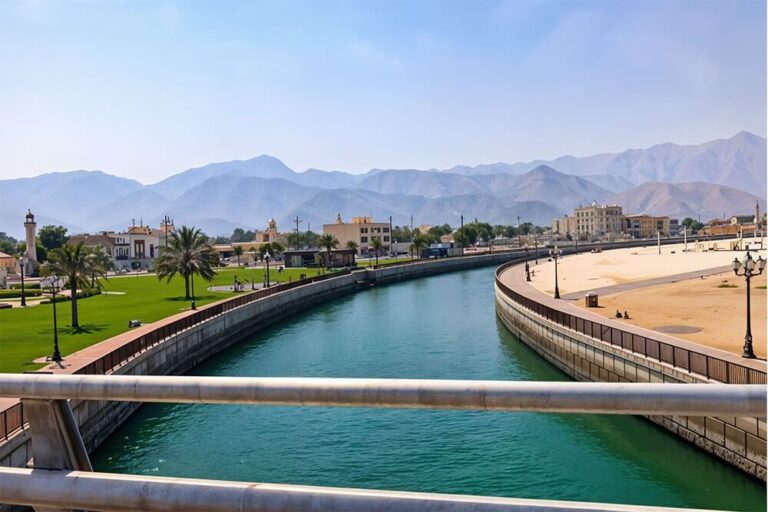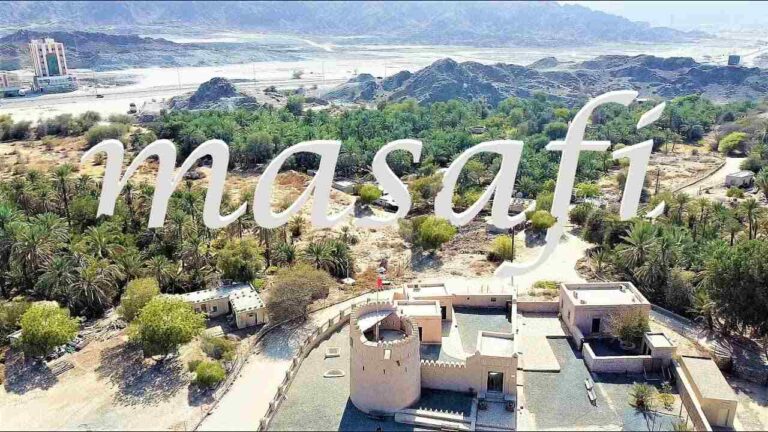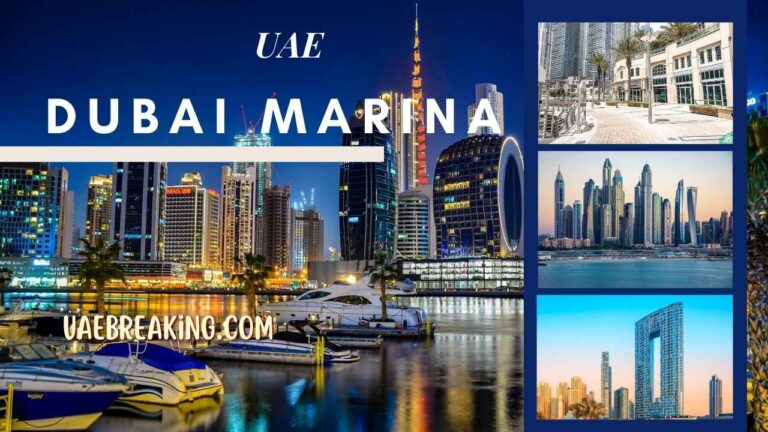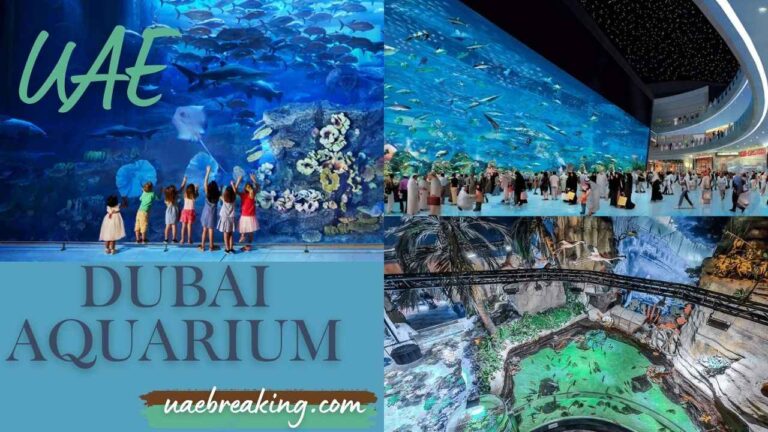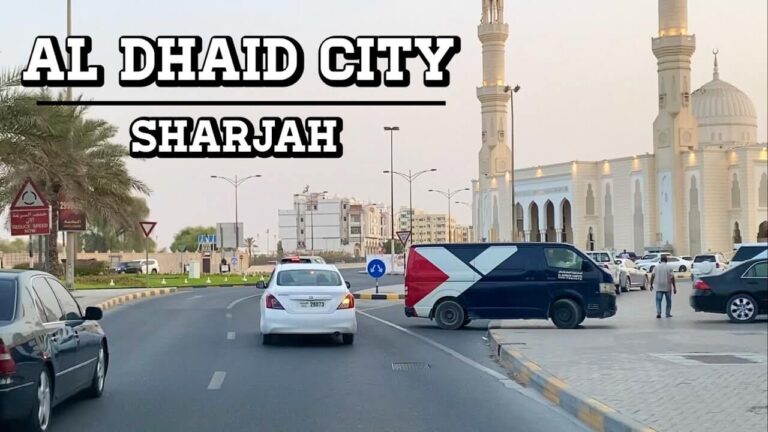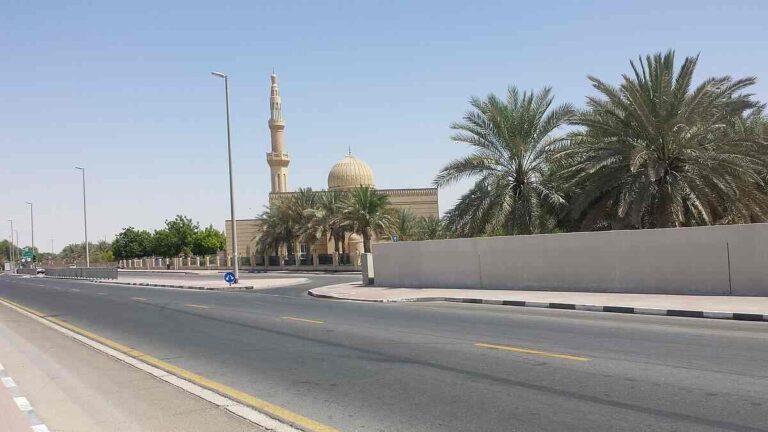Dubai Ferry, UAE
When people think of Dubai, they often imagine futuristic skyscrapers, luxury shopping, or record-breaking attractions. Yet, hidden in plain sight is one of the city’s most scenic, culturally immersive, and surprisingly practical experiences — the Dubai Ferry. What began as part of Dubai’s ambitious transportation vision has evolved into a bridge between modern urban mobility and timeless maritime charm. For both residents and visitors, the Dubai Ferry is more than just a means of travel; it is a moving window into the city’s heritage, coastline, and lifestyle.
The Rise of Dubai Ferry: Blending Vision with Tradition
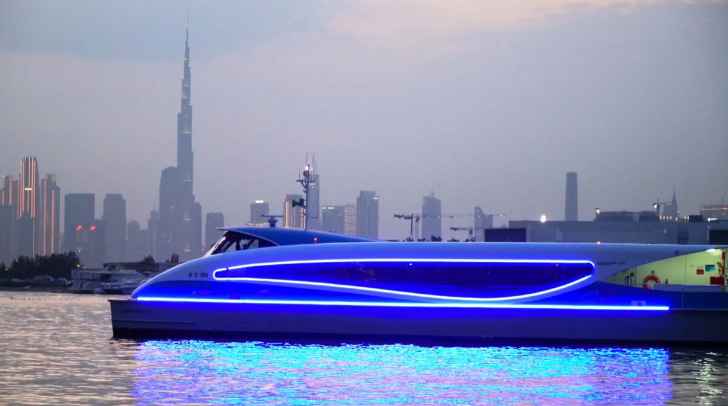
Dubai’s history is deeply tied to the sea. Long before the city became a global hub of trade and tourism, it was pearl divers, fishermen, and dhow traders who defined the rhythm of life along the creek and coast. As the emirate grew, the need for a modern yet culturally rooted marine transport system became clear. The Roads and Transport Authority (RTA) introduced the Dubai Ferry to meet this need, aligning with the government’s mission to reduce road congestion, enhance connectivity, and showcase Dubai’s waterways as living arteries of the city.
Unlike traditional abras or water taxis, the Dubai Ferry was designed with dual objectives: functionality and experience. It connects key locations across Dubai’s coastline, while also offering passengers uninterrupted panoramic views of landmarks such as the Burj Khalifa, Palm Jumeirah, and Dubai Marina. It’s public transport with a touristic twist — a rare combination that perfectly reflects Dubai’s hybrid identity.
Routes and Connectivity: Mapping the Dubai Ferry Network
The Dubai Ferry operates across multiple stations strategically placed to serve both commuters and tourists. Major terminals include:
- Dubai Marina Mall Station – A popular departure point for tourists staying near the Marina, JBR, or Bluewaters.
- Al Ghubaiba Station – Located in Old Dubai, close to Al Fahidi Historical District, connecting the cultural core with modern attractions.
- Dubai Canal Station – Giving passengers access to Business Bay and Downtown Dubai.
- Al Jaddaf and Dubai Creek Stations – Serving those who want to explore the city’s heritage near the Creek.
Ferry routes vary from short trips along the canal to longer rides stretching along the coastline. Timings are designed to cover both peak commuting hours and leisure times, including sunset cruises. The integration with other RTA transport systems — such as metro stations, buses, and water taxis — makes it a seamless part of Dubai’s multimodal transport ecosystem.
What Makes Dubai Ferry Unique?
Dubai is home to some of the most advanced transportation systems in the world, but the ferry stands out for several reasons:
- Uninterrupted Views – Unlike a taxi or metro ride, a ferry journey frames the skyline against the Arabian Gulf, offering postcard-perfect moments.
- Cultural Bridge – The ferry connects modern districts like Dubai Marina with historical areas along Dubai Creek.
- Eco-Friendly Alternative – Operating with sustainability in mind, the ferry is part of Dubai’s wider environmental commitment.
- Affordable Luxury – For a fraction of the price of private yacht tours, passengers enjoy spacious seating, air-conditioning, and scenic comfort.
The Dubai Ferry represents Dubai’s ability to combine utility with beauty, reminding passengers that transportation here is not just about getting from A to B, but about experiencing the journey itself.
Ticketing, Classes, and Comfort
Tickets for the Dubai Ferry are designed to be accessible. They can be purchased at ferry stations or using NOL cards, the same smart card used for metro, tram, and bus travel. Prices vary depending on the route length and seating class:
- Silver Class – Comfortable, air-conditioned seating for budget-friendly travel.
- Gold Class – Enhanced seating with premium views, ideal for those who want extra comfort.
Onboard, passengers enjoy wide seating, large viewing windows, clean restrooms, and sometimes even small kiosks for refreshments. Unlike traditional marine transport, the ferry emphasizes passenger comfort while maintaining efficiency.
The Dubai Ferry Experience: A Moving Panorama
Step onto the Dubai Ferry, and the city immediately reveals itself in a new light. For example, a journey from Dubai Marina to Al Ghubaiba unfolds like a cinematic sequence:
- Dubai Marina Skyline – Towering skyscrapers create a futuristic cityscape as you depart.
- Bluewaters Island and Ain Dubai – The world’s largest observation wheel looms elegantly over the water.
- Palm Jumeirah – The man-made wonder stretches across the horizon, framed by luxury resorts.
- Burj Al Arab – The sail-shaped hotel rises from the sea like a modern icon of Arabian ambition.
- Dubai Canal and Downtown Skyline – Glittering high-rises with the Burj Khalifa piercing the sky.
This makes the ferry a favorite not just for commuters, but also for photographers, families, and travelers seeking a cost-effective alternative to sightseeing tours.
Economic and Social Role of the Dubai Ferry
Beyond being a tourist attraction, the Dubai Ferry plays an important role in Dubai’s urban ecosystem. It supports:
- Tourism Development – By offering visitors scenic and affordable sightseeing options.
- Business Connectivity – Providing alternative access for professionals commuting between Business Bay, Dubai Marina, and other hubs.
- Community Integration – Linking Old and New Dubai, fostering social cohesion through shared experiences.
- Sustainability Goals – Encouraging people to choose water transport over cars, aligning with Dubai’s clean energy and smart city strategies.
- In essence, the Dubai Ferry is not just a boat service — it is part of Dubai’s broader narrative of creating a liveable, innovative, and sustainable city.
Dubai Ferry and the Future of Marine Transport
As Dubai looks ahead to Vision 2040, the role of marine transport is expected to grow. Plans include expanding ferry routes, increasing the number of stations, and introducing smart features such as mobile app booking, real-time tracking, and possibly even electric-powered ferries.
The city’s long coastline and iconic developments, from Dubai Harbour to Deira Islands, create natural demand for marine mobility. With tourism numbers rising and residents seeking sustainable alternatives, the Dubai Ferry is poised to become an even more central pillar in Dubai’s transportation strategy.
Cultural Resonance: Maritime Dubai Then and Now
Dubai Ferry is not just a transport option; it is a continuation of the emirate’s maritime legacy. The Creek, once lined with wooden dhows carrying goods to India, Iran, and East Africa, still thrives today. The ferry brings this history into the modern age, reminding passengers that while the boats may have changed, the sea remains Dubai’s eternal lifeline.
For Emiratis, the ferry also symbolizes resilience and adaptability — values that carried the nation from a pearl-diving economy to a global powerhouse. For expats and tourists, it offers a rare chance to feel connected to the cultural soul of Dubai while enjoying modern conveniences.
FAQs on Dubai Ferry
Is the Dubai Ferry suitable for tourists?
Yes, absolutely. Tourists love the Dubai Ferry because it doubles as both public transport and a sightseeing experience. It’s an affordable way to see major landmarks from the water without booking an expensive yacht tour.
How much does a ticket cost?
Ticket prices depend on the route and seating class. Silver Class is budget-friendly, while Gold Class offers a more premium experience. Both options are significantly cheaper than private cruises.
Can I use my NOL card?
Yes, NOL cards are accepted, making it easy for residents and visitors already using the metro or tram to access ferry services.
Are ferries accessible for people with disabilities?
Yes, the ferries and stations are designed to accommodate passengers with mobility challenges, including ramps and wide entrances.
What is the best time to take the Dubai Ferry?
Sunset trips are particularly popular, as they allow passengers to enjoy Dubai’s skyline under changing colors of the evening sky. However, daytime trips are equally scenic, especially for photography.
Does the ferry operate year-round?
Yes, the Dubai Ferry runs throughout the year, though schedules may adjust during holidays, special events, or weather conditions.
How long is a typical journey?
Depending on the route, journeys can last anywhere from 30 minutes to 90 minutes. Longer trips usually cover more landmarks along the coast.
Is the ferry crowded?
Crowds vary by season and time of day. Peak tourist months (November to March) see higher demand, while mornings and weekdays tend to be quieter.
Can I take children on board?
Yes, the ferry is family-friendly and a great experience for children, offering safe seating and wide viewing areas.
Is the Dubai Ferry better than a dhow cruise?
Both have their charm. Dhow cruises offer cultural dining experiences, while the ferry is more about fast, modern, and scenic travel along Dubai’s coast.
Conclusion: Why Dubai Ferry Matters
The Dubai Ferry is more than a transport system — it is a reflection of Dubai’s ability to blend heritage with progress. It represents sustainability, accessibility, and cultural continuity, all while offering passengers one of the most unique perspectives of the city. Whether you’re a resident looking for a refreshing commute, a tourist exploring Dubai’s coastline, or a photographer chasing skyline shots, the ferry invites you to slow down, look around, and embrace Dubai from the water.
In a city that never stops innovating, the Dubai Ferry quietly reminds us that sometimes the most memorable journeys are not about the destination, but the voyage itself.
For more insights into Dubai’s evolving transport, lifestyle, and cultural experiences, keep exploring UAEbreaking.com — your trusted local window into the UAE.
- XLine Dubai Marina, UAE - October 2, 2025
- Al Maktoum International Airport, Dubai, UAE - October 1, 2025
- Dubai International Airport, UAE - September 30, 2025

